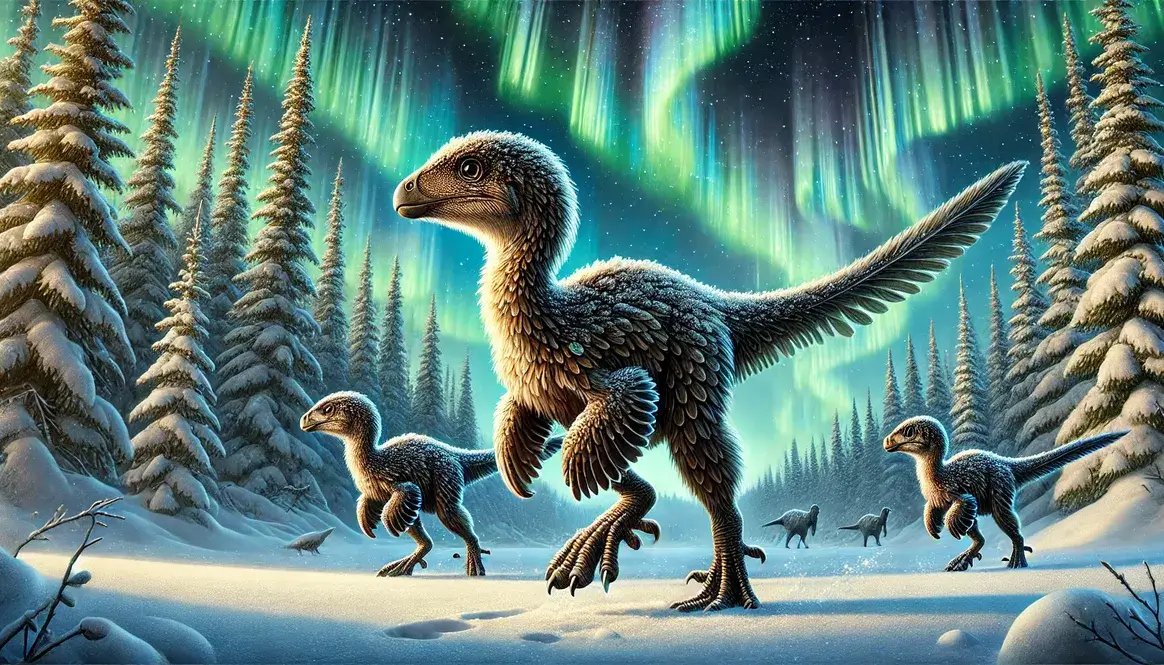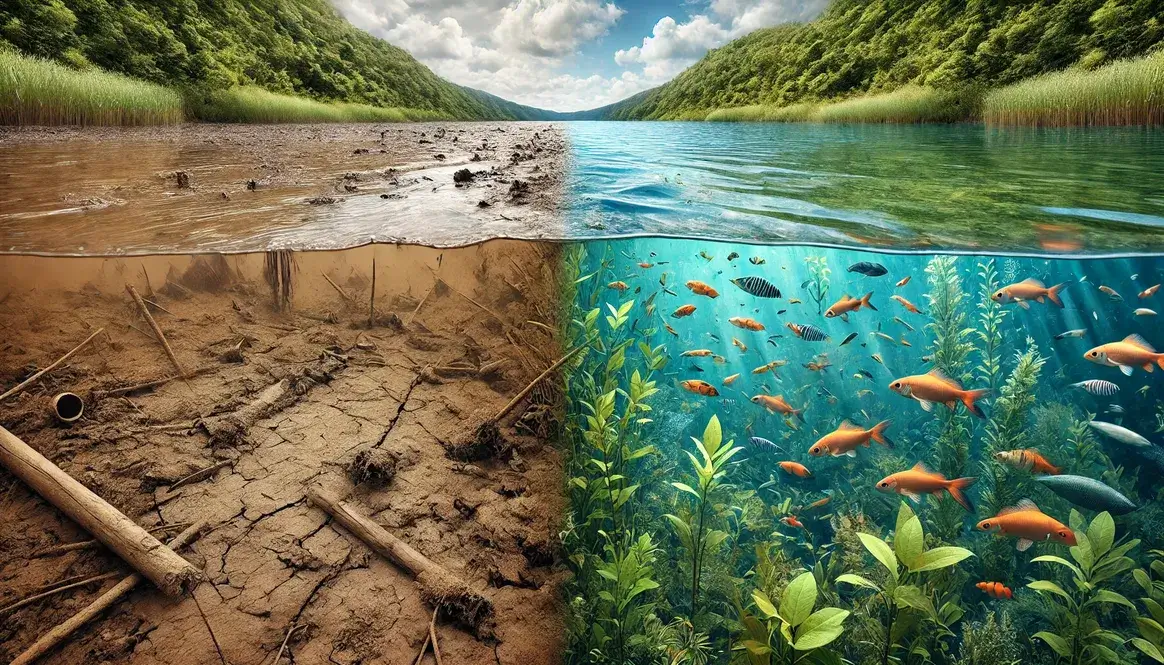When paleontologists first suggested that dinosaurs lived in polar regions, many scientists were skeptical. The idea of these ancient reptiles surviving in cold, dark environments seemed unlikely. However, as more fossils emerged from Arctic expeditions, the evidence for dinosaurs that lived in the Arctic became impossible to ignore.
| Arctic Dinosaur Facts | Details |
|---|---|
| Time Period | Late Cretaceous (100-66 million years ago) |
| Notable Species | Pachyrhinosaurus, Edmontosaurus, Troodon |
| Key Adaptations | Larger body sizes, enhanced night vision |
| Average Temperature | -2°C to 8°C (28°F to 46°F) |
| Fossil Locations | Alaska, Canada, Russia |
The first Arctic dinosaur fossils were discovered in the 1960s, but it wasn’t until the 1980s and 1990s that researchers began to fully appreciate the significance of these finds. Expeditions to places like Alaska’s North Slope and Canada’s Nunavut territory revealed a rich variety of dinosaur species that had adapted to life in these harsh northern environments. These discoveries of dinosaurs that lived in the Arctic challenged long-held beliefs about dinosaur physiology and behavior.
Scientists had to rethink their understanding of these prehistoric creatures, considering how they might have coped with extreme seasonal changes, including months of darkness and periods of cold.
As more fossils were unearthed, it became clear that the Arctic wasn’t just home to a few hardy species—it supported a diverse ecosystem of dinosaurs, from plant-eaters to predators. This realization opened up new avenues of research and sparked fascinating questions about dinosaur adaptations, migration patterns, and the ancient Arctic climate.
The study of Arctic dinosaurs has since become a thriving field, attracting researchers from around the world. These prehistoric polar dwellers continue to reshape our understanding of dinosaur biology and behavior, providing valuable insights into how life adapts to extreme environments.
Dinosaurs that lived in the Arctic
The Arctic regions of the Late Cretaceous period, spanning from about 100 to 66 million years ago, were home to a surprising variety of dinosaur species. These ancient polar inhabitants adapted to survive in conditions quite different from what we typically associate with dinosaur habitats.
Herbivorous Arctic Dinosaurs
Plant-eating dinosaurs made up a significant portion of the Arctic dinosaur population. These herbivores developed unique adaptations to thrive in the challenging polar environment.
- Edmontosaurus: This duck-billed dinosaur was one of the most common herbivores in the Arctic. Growing up to 13 meters (43 feet) long, Edmontosaurus had a wide, flat beak perfect for stripping leaves from plants. Fossils of this species have been found in Alaska and Canada.
- Pachyrhinosaurus: A member of the ceratopsian family, Pachyrhinosaurus was known for its thick bone on its snout instead of a horn. These dinosaurs reached lengths of 8 meters (26 feet) and lived in herds for protection against predators.
- Ugrunaaluk: This hadrosaur, closely related to Edmontosaurus, was discovered in Alaska. Its name means “ancient grazer” in the Inupiaq language. Ugrunaaluk grew to about 9 meters (30 feet) long.
| Arctic Herbivore | Size | Notable Features |
|---|---|---|
| Edmontosaurus | Up to 13m | Duck-billed, wide flat beak |
| Pachyrhinosaurus | Up to 8m | Thick bone on snout, lived in herds |
| Ugrunaaluk | About 9m | Related to Edmontosaurus, “ancient grazer” |
These herbivores had to adapt to the unique challenges of the Arctic environment. Some scientists believe they may have developed larger body sizes to conserve heat, a phenomenon known as Bergmann’s rule in evolutionary biology. Their large, sturdy bodies would have helped them withstand the cold and store energy for the long, dark winter months.
Interestingly, many of these herbivores had advanced chewing mechanisms, allowing them to process tough Arctic vegetation efficiently. This adaptation was crucial for survival in an environment where plant growth was seasonal and often limited.
The presence of these large herbivores suggests that the Arctic of the Late Cretaceous was capable of supporting significant plant life, despite the challenging climate. This, in turn, provides valuable insights into the Cretaceous climate and how it differed from today’s Arctic conditions.
Carnivorous Arctic Dinosaurs
While herbivores thrived in the Arctic, they weren’t alone. A variety of carnivorous dinosaurs also called these northern regions home, forming a complex ecosystem in the polar environments of the Late Cretaceous.
Some notable meat-eating dinosaurs found in Arctic fossil beds include:
- Nanuqsaurus: A relative of the famous Tyrannosaurus rex, this “polar bear lizard” was smaller than its southern cousins, reaching only about 6 meters (20 feet) in length.
- Troodon: These small, bird-like dinosaurs were known for their large brains and eyes, potentially giving them an advantage in the long Arctic nights.
- Dromaeosaurus: Often called “raptors,” these agile predators were likely covered in feathers, which may have helped them stay warm in the chilly Arctic climate.
Hunting in the Arctic presented unique challenges for these carnivores. The long periods of darkness during winter months required special adaptations. Troodon’s large eyes suggest it was well-suited for hunting in low-light conditions, potentially giving it an edge during the extended twilight periods of the Arctic.
Nanuqsaurus, despite its smaller size compared to other tyrannosaurs, was likely the apex predator in its ecosystem. Its reduced size might have been an adaptation to the limited resources available in the Arctic environment, allowing it to survive on less food than its larger relatives.
| Arctic Carnivore | Size | Hunting Adaptations |
|---|---|---|
| Nanuqsaurus | ~6m | Smaller size, efficient predator |
| Troodon | ~2m | Large eyes, night vision |
| Dromaeosaurus | ~2m | Agile, possibly feathered |
These carnivores likely employed various hunting strategies to survive in the harsh Arctic environment. Pack hunting may have been common, especially among smaller predators like Troodon and Dromaeosaurus. This cooperative behavior would have allowed them to take down larger prey and share the spoils.
The seasonal nature of the Arctic would have also influenced hunting patterns. During the abundant summer months, predators may have hunted actively and frequently. In contrast, the scarce winter period might have led to more opportunistic feeding behaviors or potential hibernation-like states for some species.
Understanding these Arctic carnivores provides valuable insights into dinosaur adaptability and the diversity of prehistoric polar ecosystems. Their presence alongside herbivores paints a picture of a complex food web that flourished despite the challenging environmental conditions of the Cretaceous Arctic.
Arctic Dinosaur Adaptations
Dinosaurs that lived in the Arctic developed a range of adaptations to survive in the challenging polar conditions. These adaptations encompassed physical, behavioral, and physiological changes, allowing them to thrive in an environment that experienced extreme seasonal variations in temperature and daylight.
Physical Adaptations
Arctic dinosaurs exhibited several physical adaptations that helped them cope with the cold climate:
- Larger Body Sizes: Many Arctic dinosaur species were larger than their southern relatives. This increase in size helped them conserve heat more efficiently, following a principle known as Bergmann’s rule.
- Insulation: Some species likely developed insulating layers of fat or feathers. While direct evidence of feathers is rare in Arctic dinosaur fossils, related species are known to have had feathery coverings.
- Enhanced Visual Systems: Carnivores like Troodon had large eyes, which would have been beneficial for hunting during the long periods of twilight characteristic of polar regions.
- Specialized Beaks and Teeth: Herbivores developed efficient chewing mechanisms to process the tough vegetation available in the Arctic environment.
Behavioral Adaptations
Dinosaurs likely modified their behavior to survive the extreme seasonal changes in the Arctic:
- Seasonal Migration: Some researchers suggest that certain dinosaur species might have migrated south during the harshest winter months, similar to modern Arctic animals. This theory is supported by evidence of dinosaur migration patterns found in fossil trackways.
- Overwintering: Other species may have stayed in the Arctic year-round, developing strategies to survive the long, dark winters. This could have involved changing their activity patterns or seeking shelter in forested areas that provided some protection from the elements.
- Social Behavior: Living in herds or family groups could have helped dinosaurs share body heat and protect each other from predators during vulnerable periods.
Physiological Adaptations
The internal biology of Arctic dinosaurs likely played a crucial role in their survival:
- Warm-Blooded Characteristics: Many scientists now believe that dinosaurs were endothermic (warm-blooded) to some degree. This would have been particularly advantageous for Arctic species, allowing them to maintain their body temperature in cold conditions.
- Metabolic Adjustments: Arctic dinosaurs may have had the ability to lower their metabolic rates during periods of scarcity, similar to how some modern animals enter a state of torpor.
- Specialized Circulatory Systems: Some species might have developed ways to regulate blood flow to their extremities, minimizing heat loss in cold temperatures.
| Adaptation Type | Examples |
|---|---|
| Physical | Larger body sizes, insulation, enhanced vision |
| Behavioral | Migration, overwintering, social grouping |
| Physiological | Endothermy, metabolic adjustments, circulatory adaptations |
These adaptations demonstrate the remarkable ability of dinosaurs to evolve and thrive in diverse environments, including the challenging conditions of the prehistoric Arctic. By studying these adaptations, paleontologists gain valuable insights into dinosaur biology and the ancient polar ecosystems they inhabited.
Evidence from Arctic Fossil Beds
The study of Arctic dinosaurs relies heavily on fossils discovered in polar regions. These fossil beds have provided valuable insights into the diverse ecosystems that existed in the far north during the Mesozoic era. Let’s explore some of the key Arctic fossil sites and their significant discoveries.
Alaska’s North Slope
Alaska’s North Slope has been a treasure trove of Arctic dinosaur fossils, particularly along the Colville River. This area, known as the Prince Creek Formation, has yielded numerous important discoveries:
- Ugrunaaluk kuukpikensis: This hadrosaur, whose name means “ancient grazer” in the Iñupiaq language, was discovered here in 2015. It represents one of the northernmost dinosaurs ever found.
- Nanuqsaurus hoglundi: Fossils of this smaller tyrannosaur relative were unearthed in 2014, providing evidence of apex predators in the Arctic ecosystem.
- Diverse Ecosystem: The Prince Creek Formation has revealed a rich variety of dinosaur species, including theropods, hadrosaurs, and ceratopsians, indicating a complex food web in the ancient Arctic.
These discoveries have been crucial in understanding how dinosaurs adapted to polar conditions and have challenged previous assumptions about dinosaur distribution and physiology.
Canadian Arctic Archipelago
The Canadian Arctic Archipelago, particularly Nunavut and the Northwest Territories, has provided significant fossil evidence of Arctic dinosaurs:
- Elmisaurus: Fossils of this small, bird-like theropod were found on Axel Heiberg Island, expanding our understanding of Arctic carnivores.
- Hadrosaur Nesting Sites: Dinosaur egg fossils discovered on Devon Island suggest that some species nested in the far north, rather than migrating south for reproduction.
- Plant Fossils: Alongside dinosaur remains, plant fossils found in this region have helped reconstruct the ancient Arctic environment, indicating a much warmer climate than today’s Arctic.
These findings have been instrumental in piecing together the puzzle of Arctic dinosaur ecology and behavior.
Northern Russia
The Siberian Arctic has also contributed significantly to our understanding of polar dinosaurs:
- Tengrisaurus: Discovered in 2017 in Yakutia, this sauropod provides evidence that long-necked plant-eaters could survive in northern latitudes.
- Kileskus: This early tyrannosauroid, found in the Krasnoyarsk region, helps trace the evolution of tyrannosaurs in the Arctic.
- Psittacosaurus sibiricus: While not strictly Arctic, this ceratopsian relative from southern Siberia shows how dinosaurs were adapting to cooler climates at higher latitudes.
| Region | Key Discoveries | Significance |
|---|---|---|
| Alaska’s North Slope | Ugrunaaluk, Nanuqsaurus | Diverse Arctic ecosystem |
| Canadian Arctic | Elmisaurus, Hadrosaur nests | Evidence of year-round habitation |
| Northern Russia | Tengrisaurus, Kileskus | Expansion of known Arctic species |
These Arctic fossil beds have dramatically changed our understanding of dinosaur distribution and adaptability. They provide compelling evidence that dinosaurs were not limited to warm, tropical environments but were capable of thriving in a wide range of climates, including the challenging conditions of the prehistoric Arctic.
What Arctic Dinosaurs Tell Us
The discovery and study of dinosaurs that lived in the Arctic have significantly expanded our understanding of prehistoric life. These findings offer valuable insights into dinosaur biology, behavior, and the environmental conditions of the Cretaceous period.
Dinosaur Physiology
Arctic dinosaur fossils provide crucial evidence about dinosaur metabolism and thermoregulation:
- Endothermy: The presence of diverse dinosaur species in polar regions suggests that many dinosaurs were likely warm-blooded (endothermic). This ability to maintain a constant body temperature would have been essential for surviving in the Arctic’s challenging climate.
- Growth Rates: By studying growth rings in dinosaur bones, scientists have found that Arctic dinosaurs had growth patterns similar to their lower-latitude relatives. This indicates that they were able to maintain high metabolic rates even in colder environments.
- Insulation: While direct evidence is limited, the discovery of feathered dinosaurs in other regions suggests that Arctic species might have had insulating coverings to help maintain body heat.
These physiological adaptations challenge earlier notions of dinosaurs as purely cold-blooded creatures and provide evidence for their remarkable adaptability.
Cretaceous Climate
Arctic dinosaur fossils offer a window into the Cretaceous climate, particularly in polar regions:
- Warmer Arctic: The presence of diverse plant and animal life in the Arctic suggests that the polar regions were much warmer during the Cretaceous than they are today. Average temperatures likely ranged from 2°C to 8°C (35°F to 46°F), compared to the sub-zero temperatures of the modern Arctic.
- Seasonal Variations: Despite warmer overall temperatures, the Arctic still experienced significant seasonal changes, including periods of darkness in winter. This is evidenced by growth patterns in fossil wood and bone samples.
- Greenhouse Effect: The warmer Arctic climate was likely due to higher levels of greenhouse gases, particularly CO2, in the atmosphere. This Cretaceous greenhouse effect contributed to generally higher global temperatures and sea levels.
Understanding the Cretaceous Arctic climate helps scientists model past global climate systems and provides context for studying current climate change.
Dinosaur Migration
Evidence from Arctic fossils has sparked debates about dinosaur migration patterns:
- Year-round Residents: The discovery of nesting sites and very young dinosaur fossils in Arctic regions suggests that some species lived in these areas year-round, rather than migrating seasonally.
- Potential Migrations: However, some scientists propose that certain species might have undertaken long-distance migrations to avoid the harshest winter conditions. This hypothesis is based on comparisons with modern Arctic animals and analysis of fossil trackways.
- Adaptive Strategies: The evidence suggests that different dinosaur species likely adopted various strategies to cope with Arctic conditions, which may have included both year-round residency and seasonal migrations.
| Insight | Evidence | Implication |
|---|---|---|
| Endothermy | Diverse Arctic species | Many dinosaurs were warm-blooded |
| Warmer Arctic | Plant and animal diversity | Cretaceous had higher CO2 levels |
| Variable Strategies | Nesting sites, trackways | Some migrated, others were residents |
These insights from Arctic dinosaurs continue to reshape our understanding of prehistoric life, demonstrating the incredible adaptability of dinosaurs and the dynamic nature of Earth’s past climates. By studying these polar dwellers, scientists gain valuable perspectives on both ancient ecosystems and the potential impacts of future climate change.
The Mysteries of Arctic Dinosaurs
The study of dinosaurs that lived in the Arctic continues to challenge our understanding of these ancient creatures and their world. From the diverse array of species discovered to the remarkable adaptations they developed, Arctic dinosaurs provide a unique window into the resilience and versatility of prehistoric life.
These findings not only reshape our view of dinosaur physiology and behavior but also offer valuable insights into the Cretaceous climate and ecosystem dynamics. As researchers continue to explore Arctic fossil beds and analyze their discoveries, we can expect even more fascinating revelations about these prehistoric polar inhabitants. The story of Arctic dinosaurs serves as a powerful reminder of the ever-changing nature of our planet and the incredible adaptability of life throughout Earth’s history.









